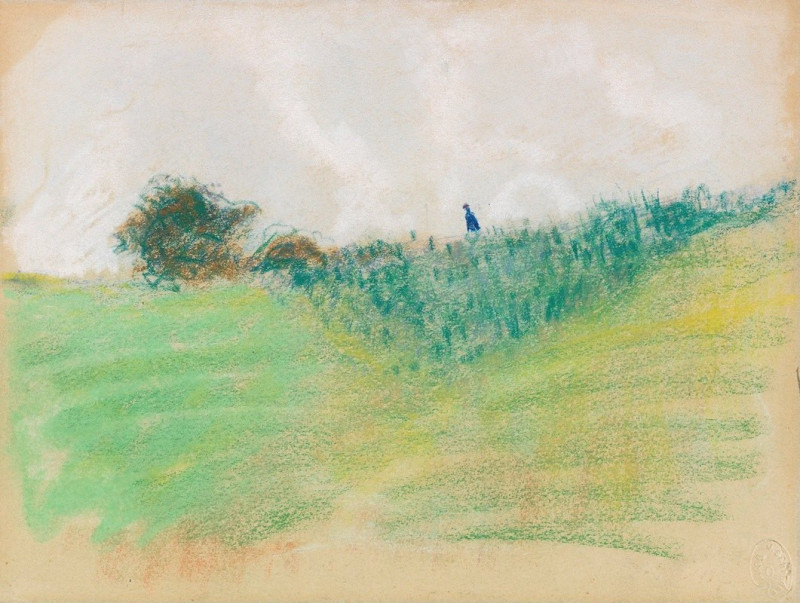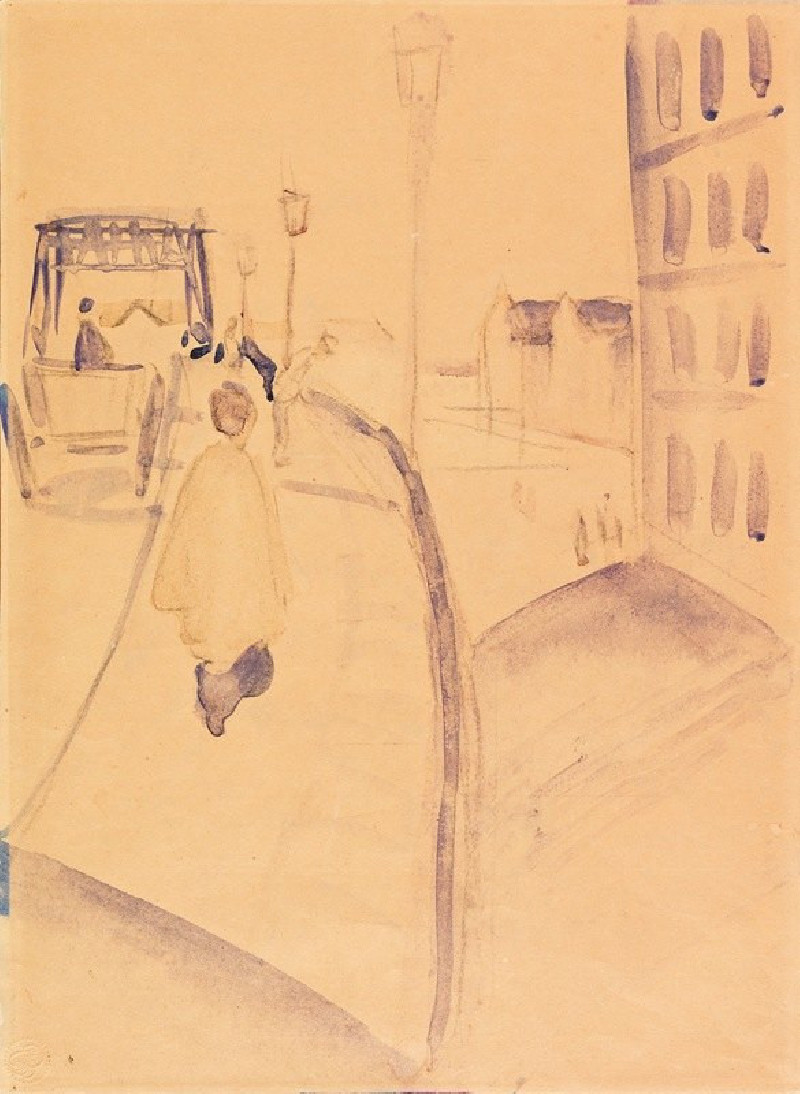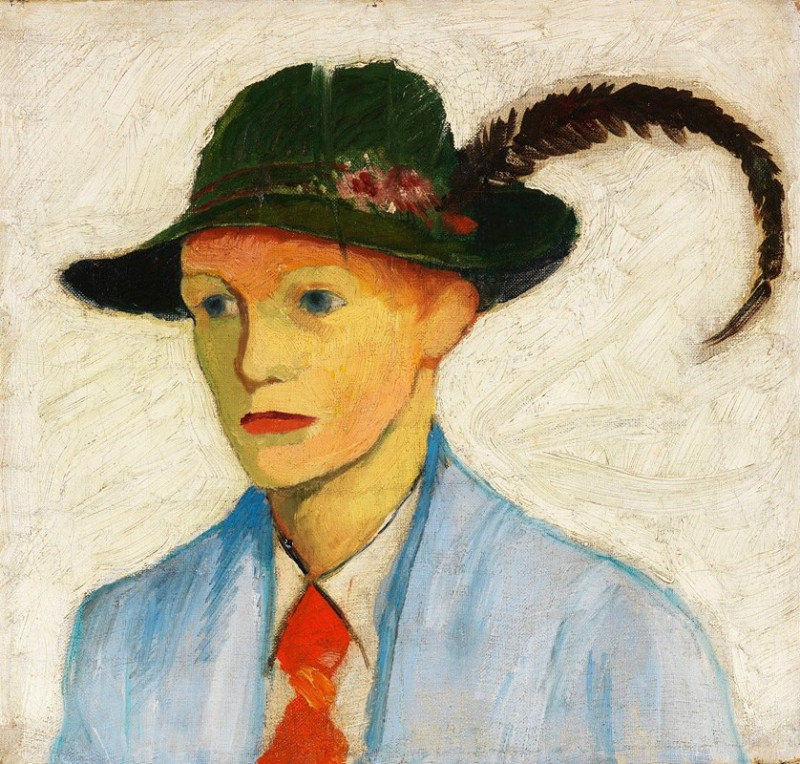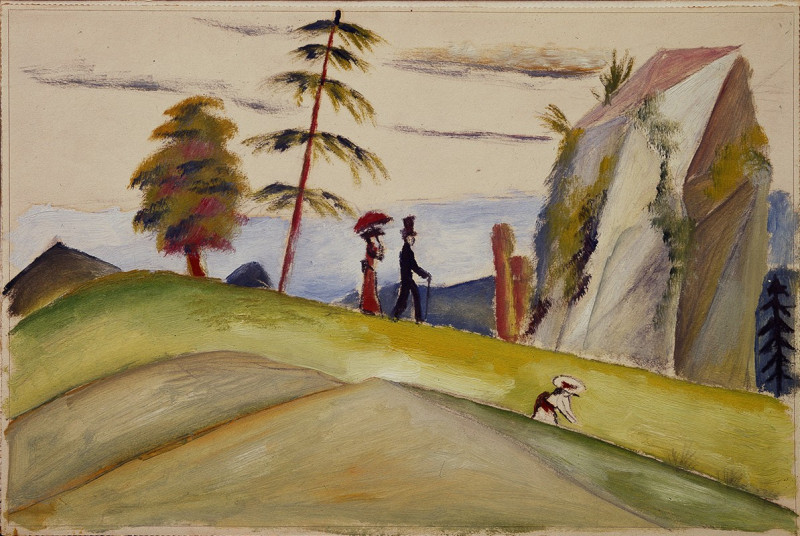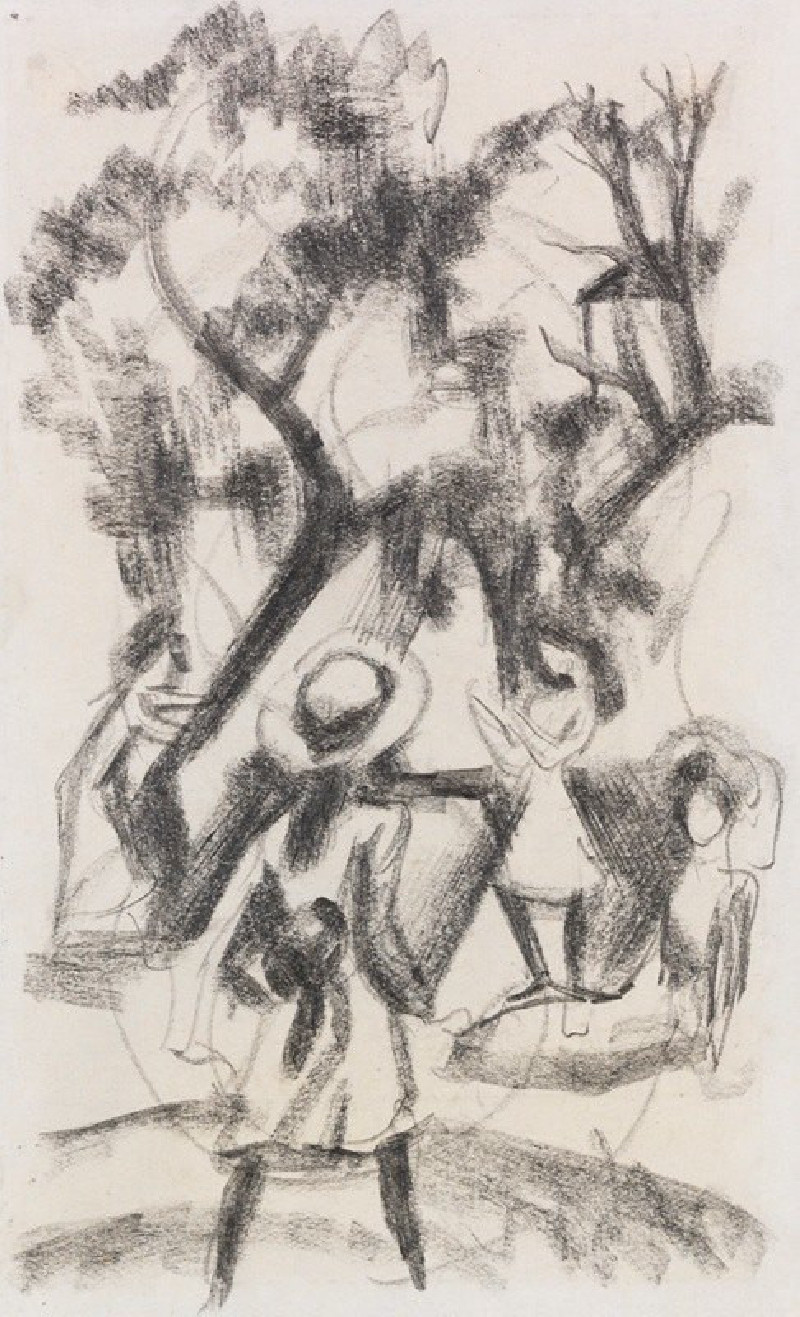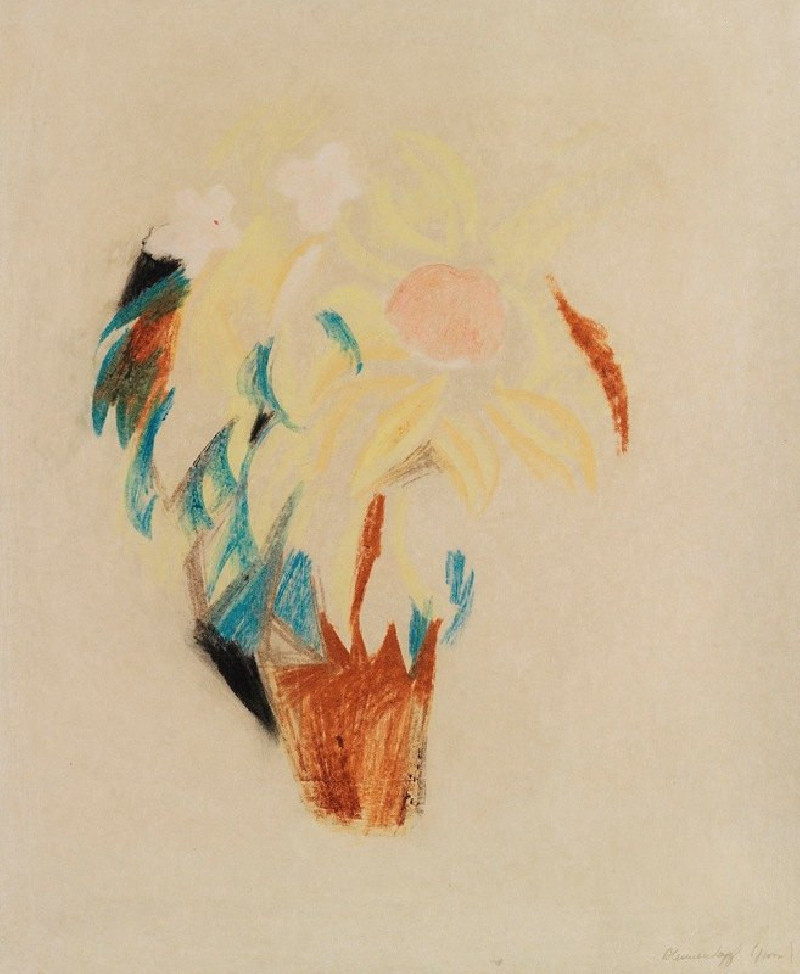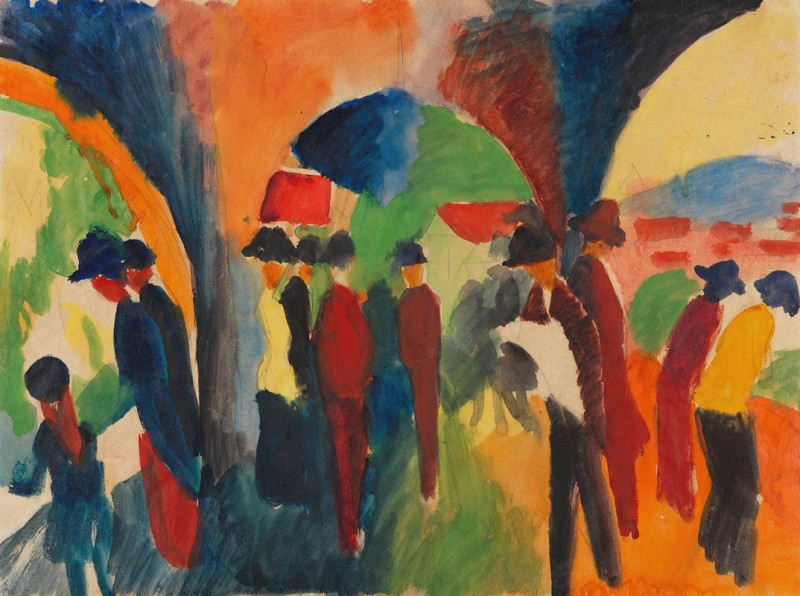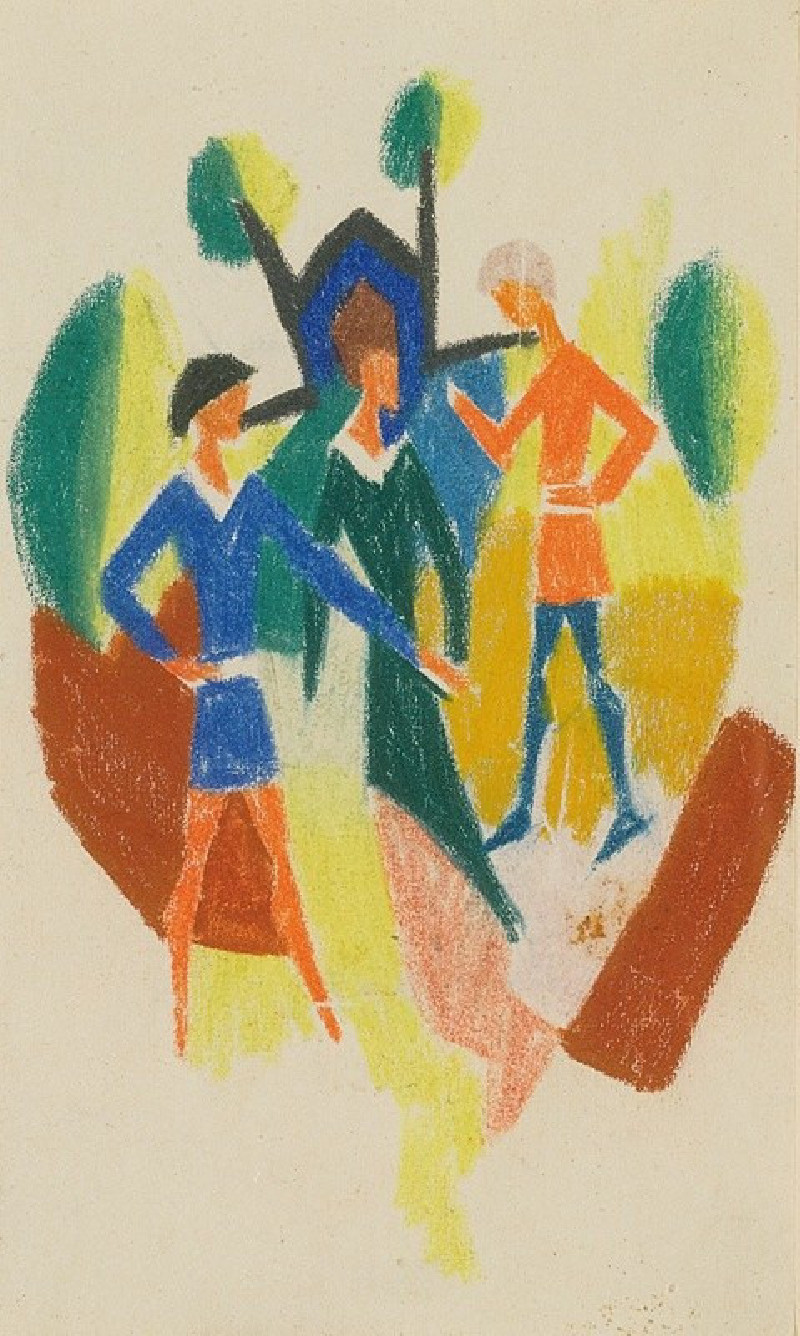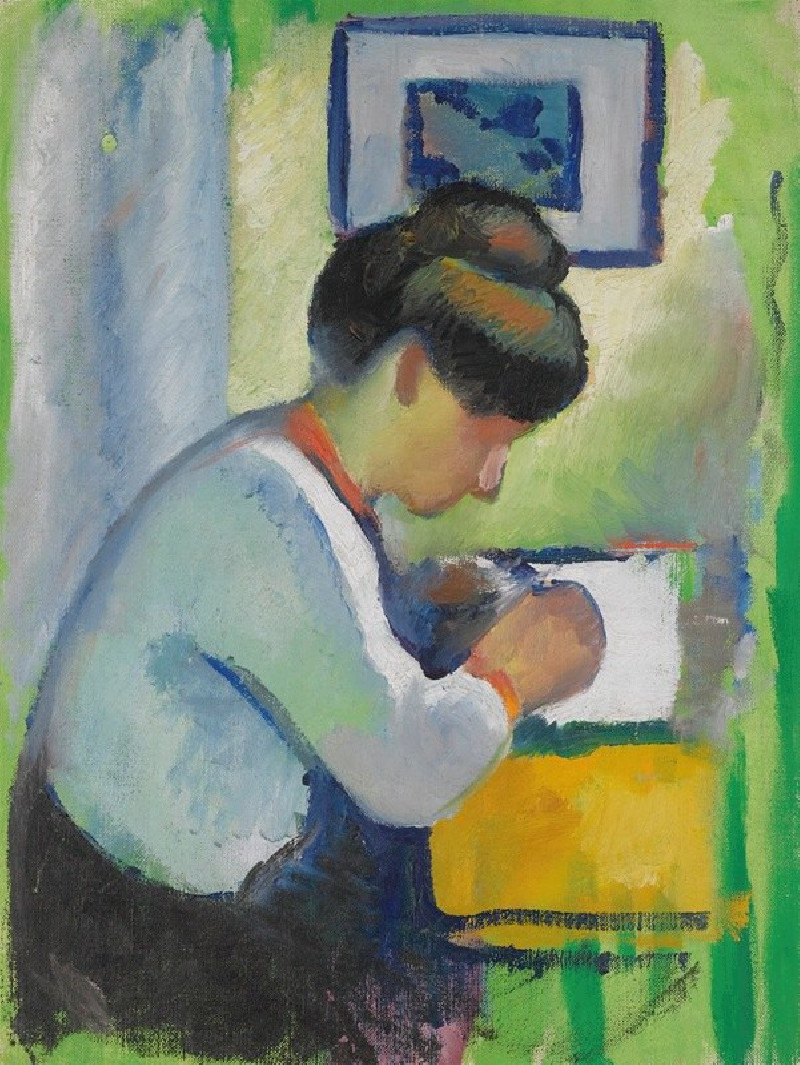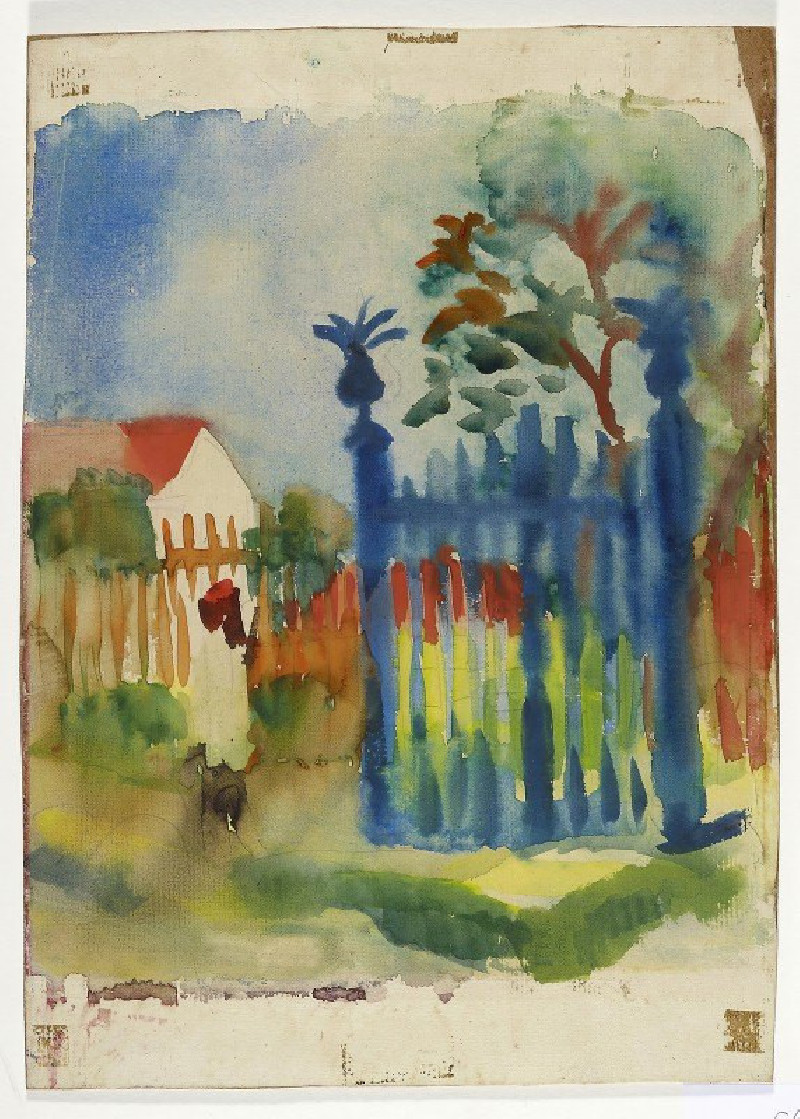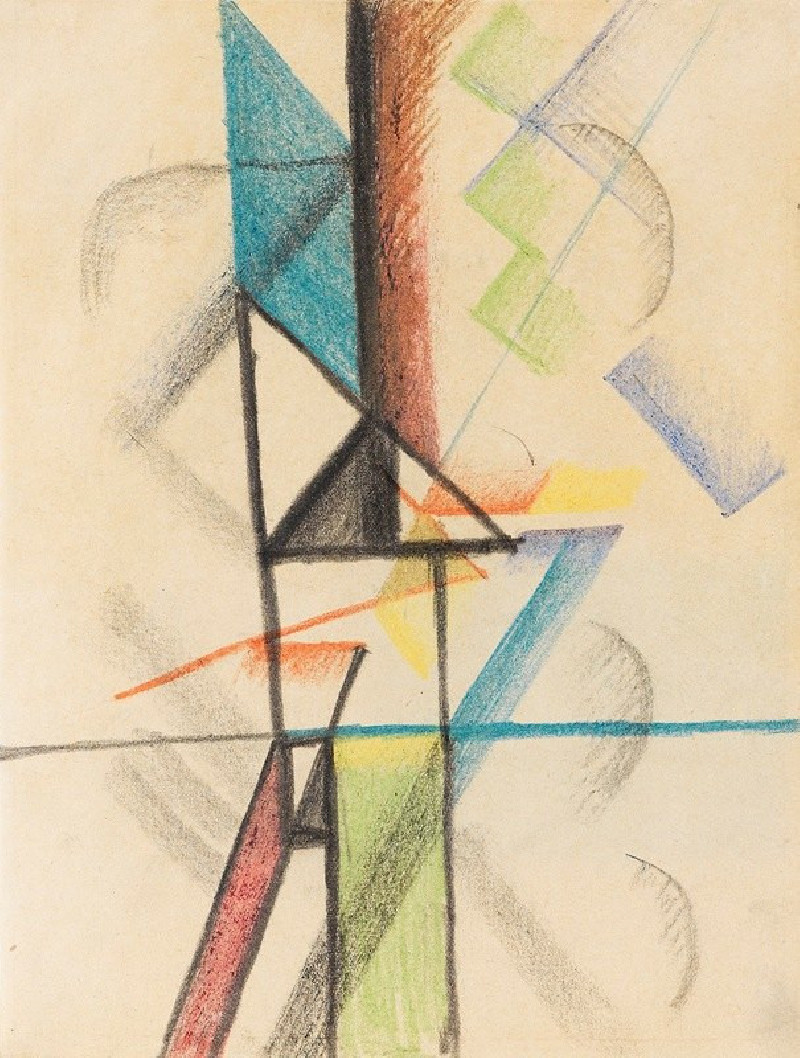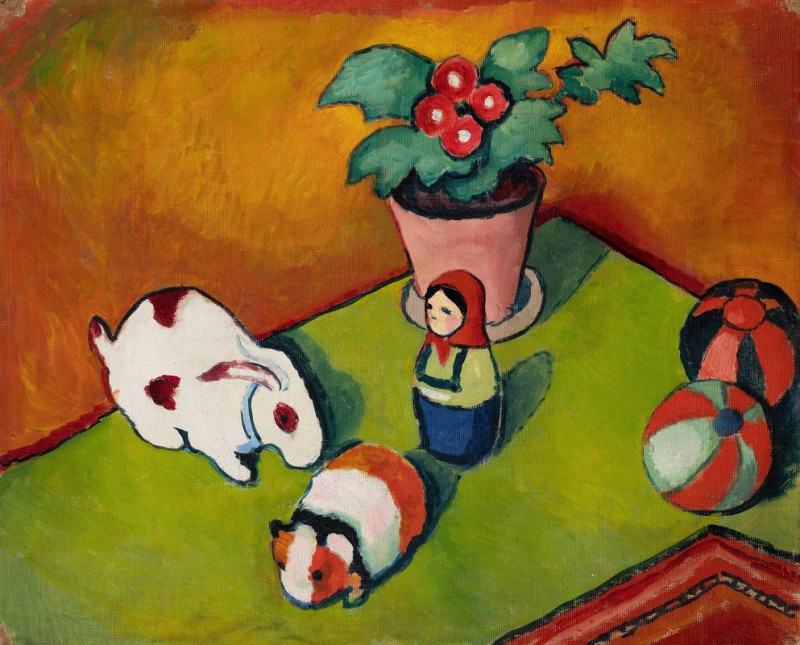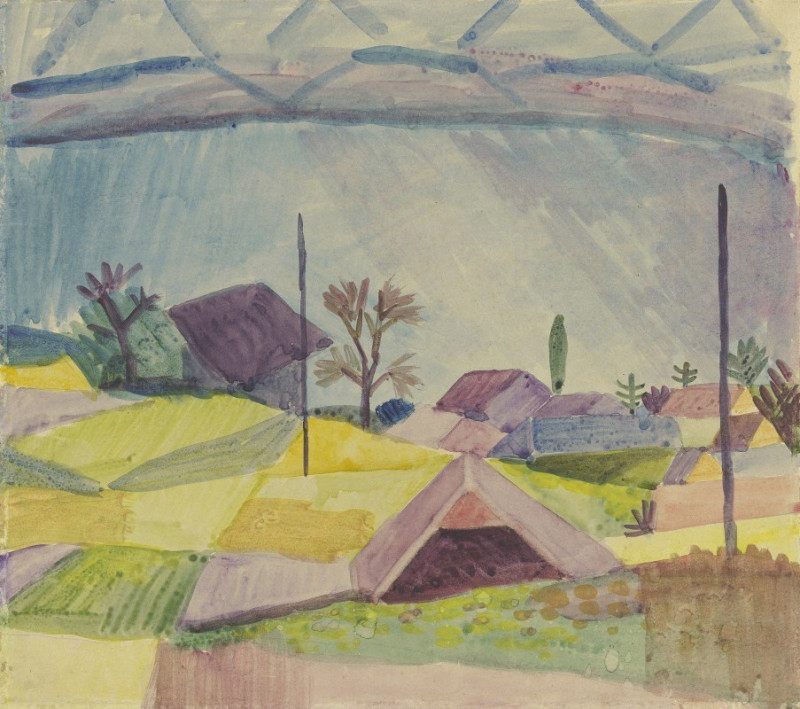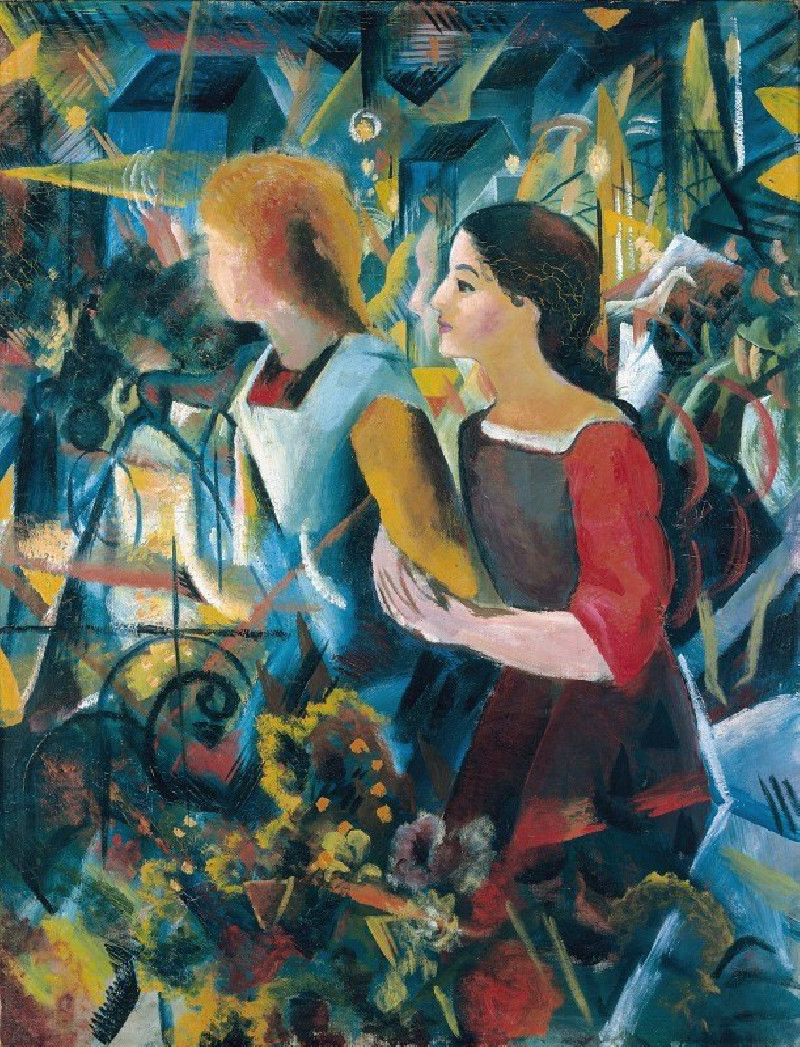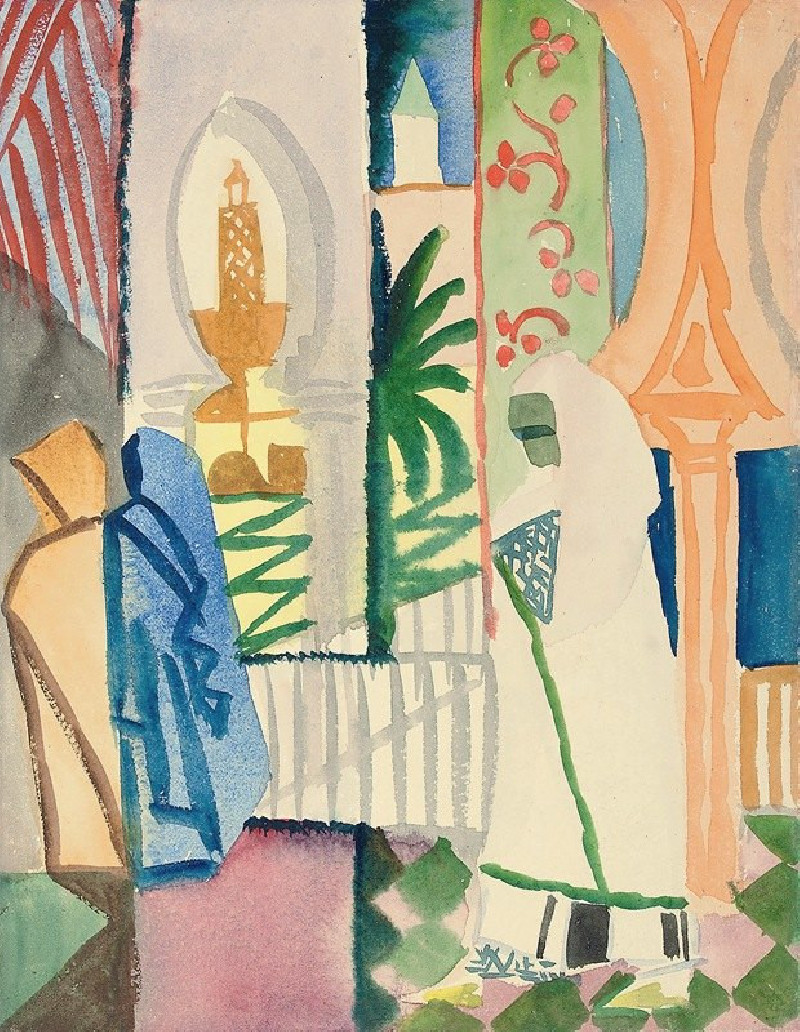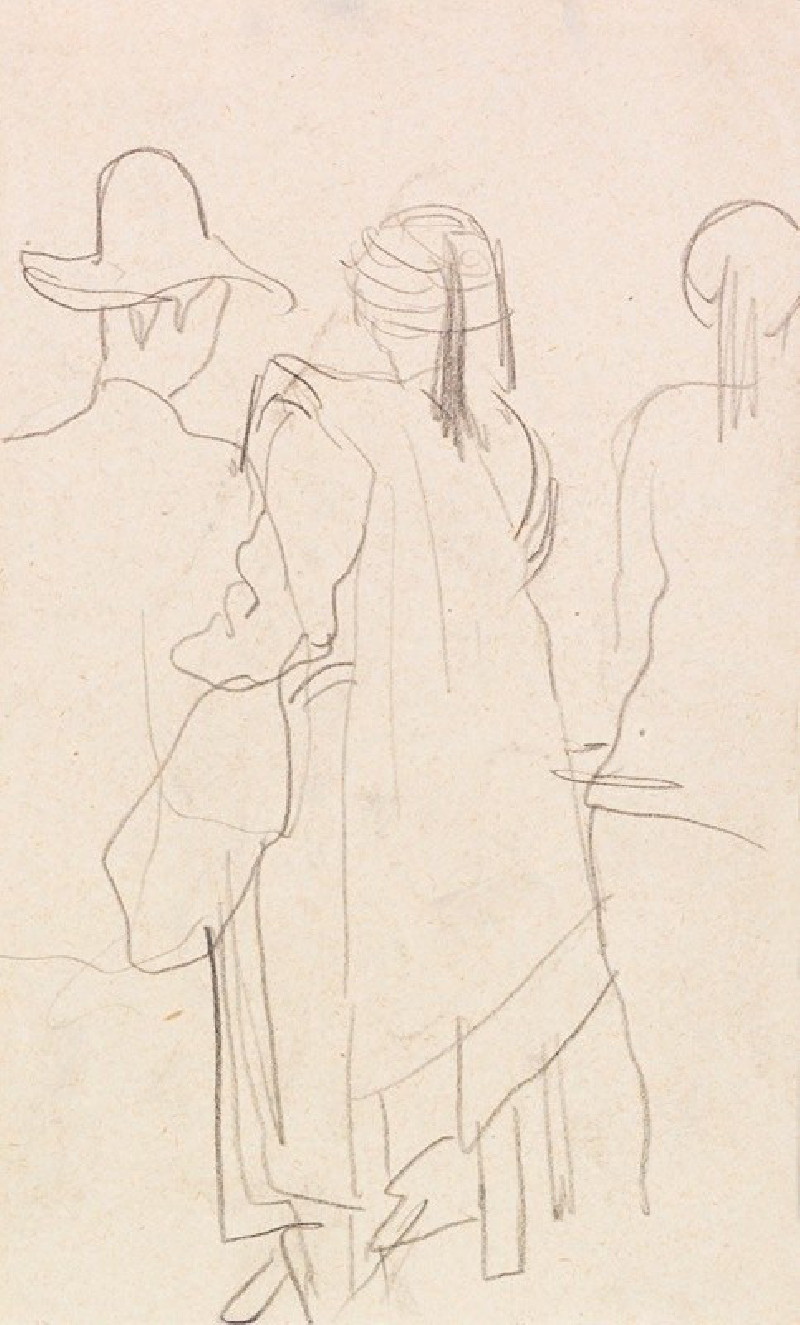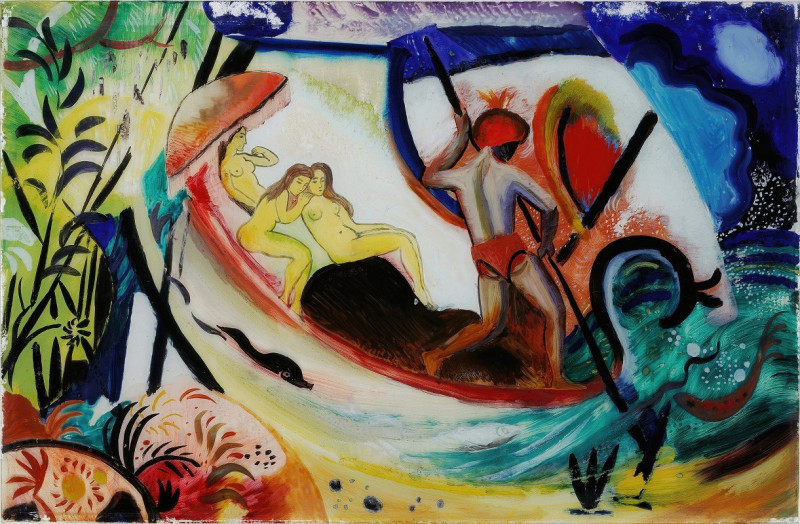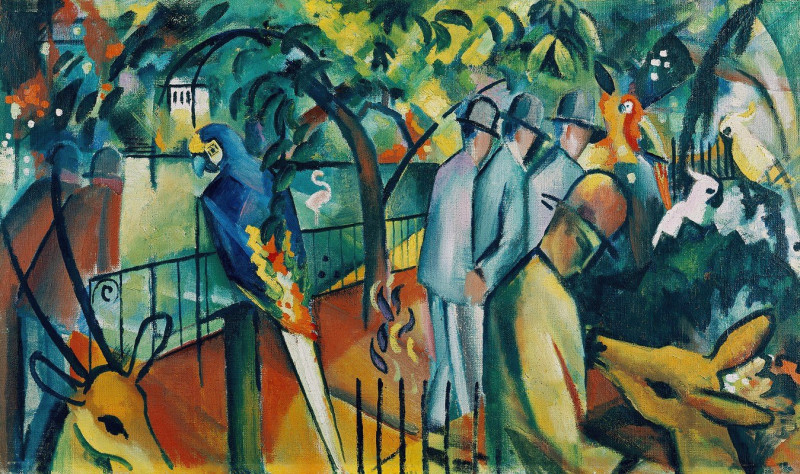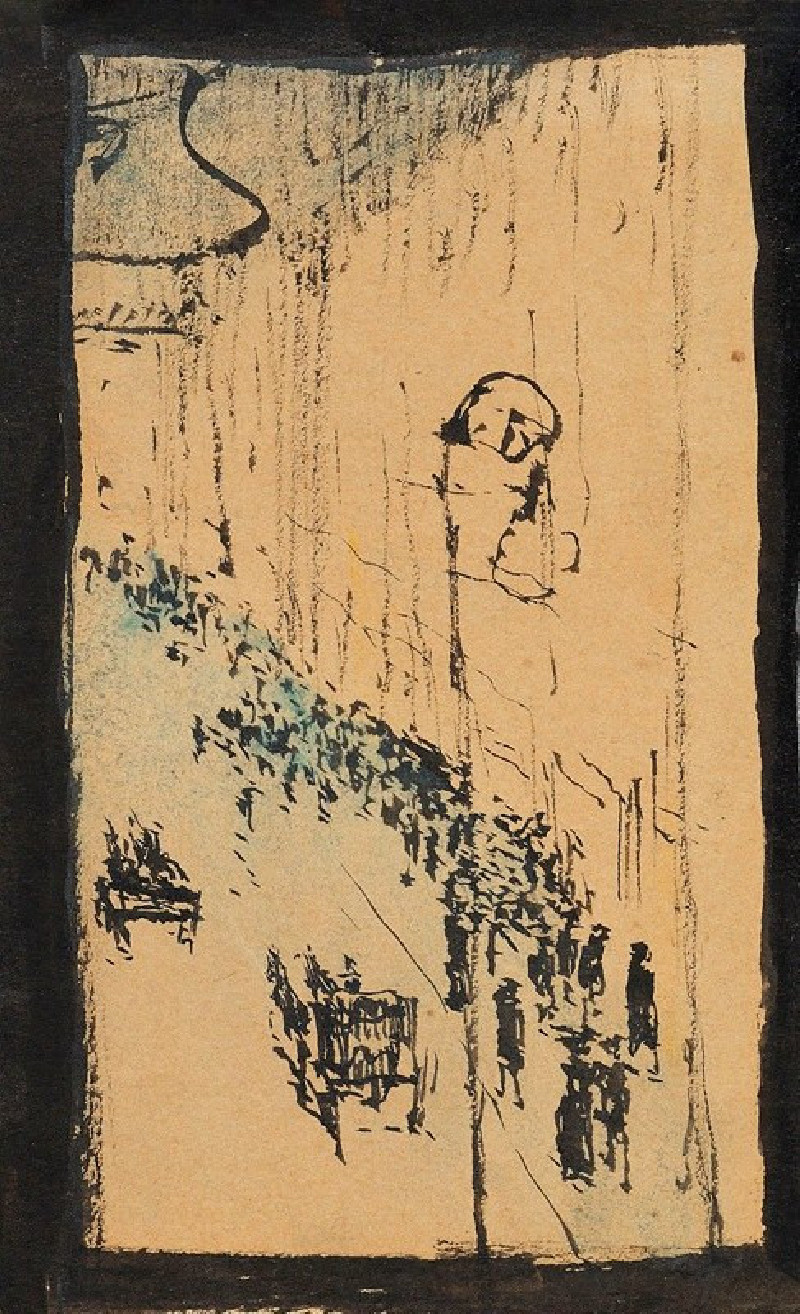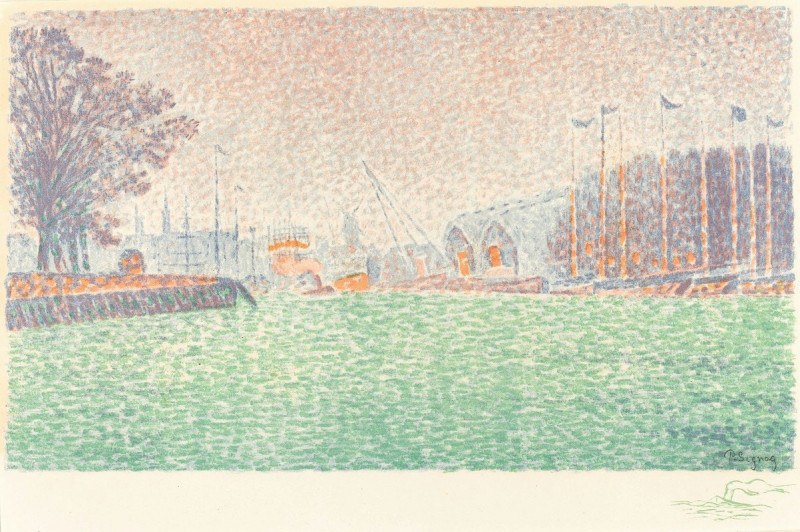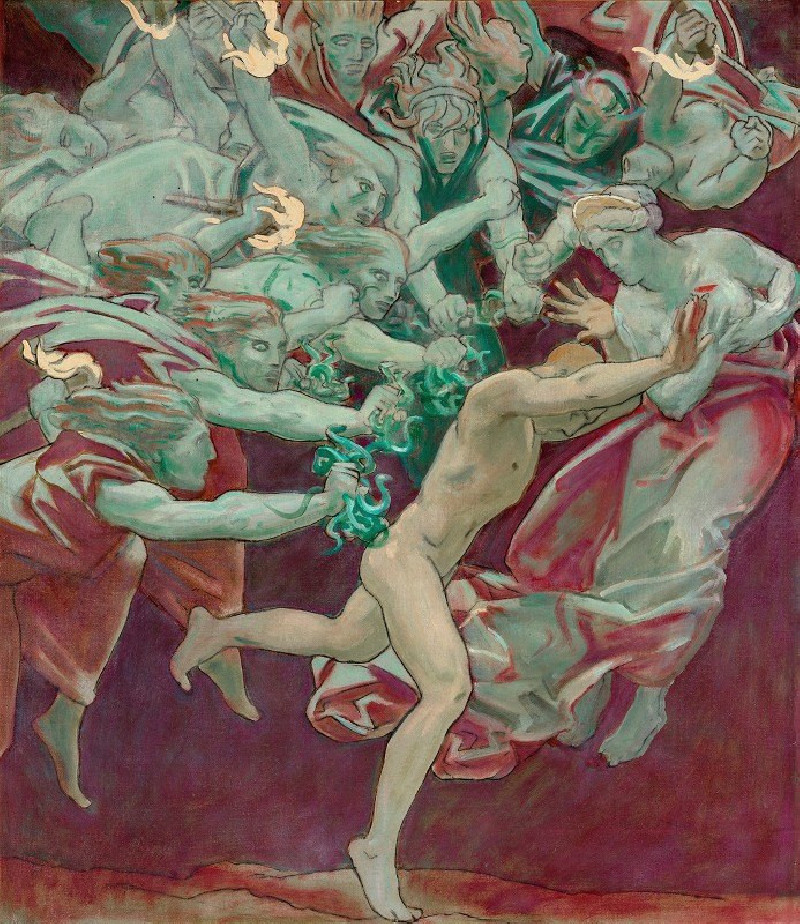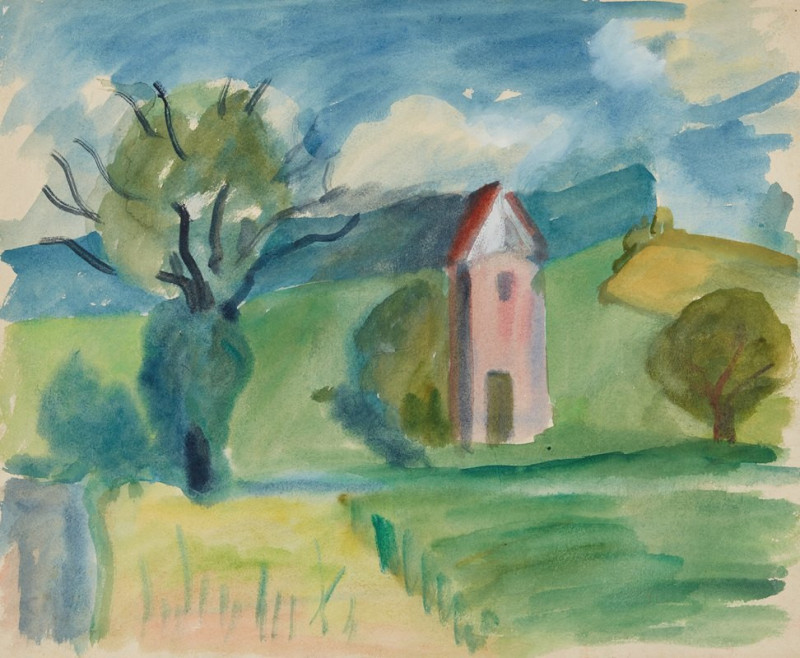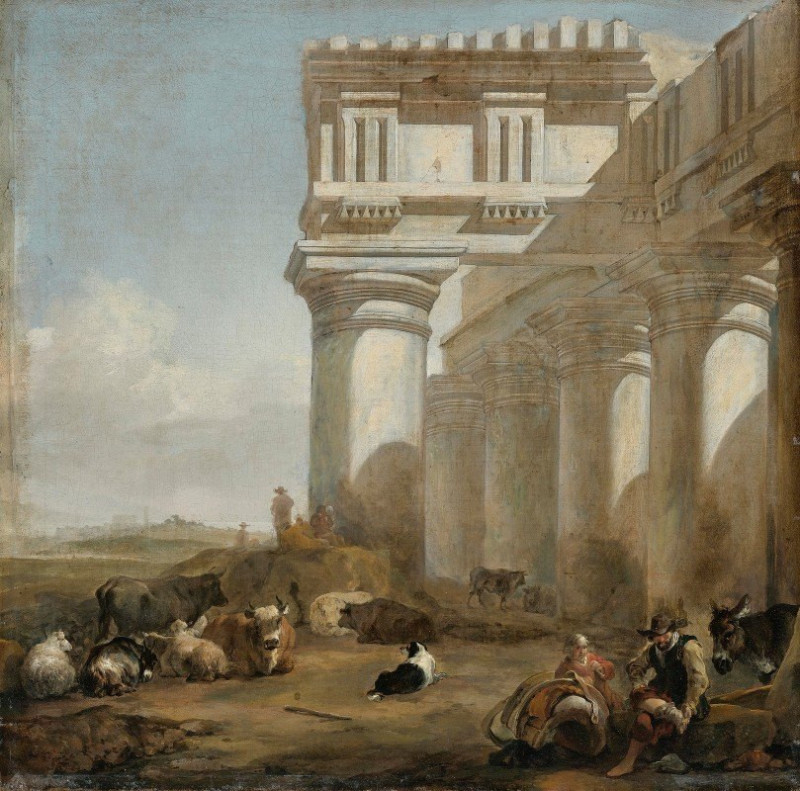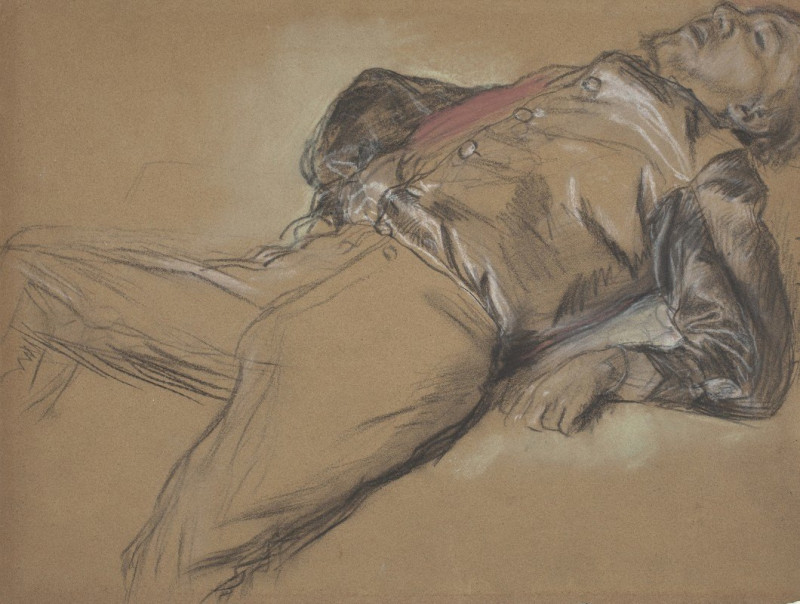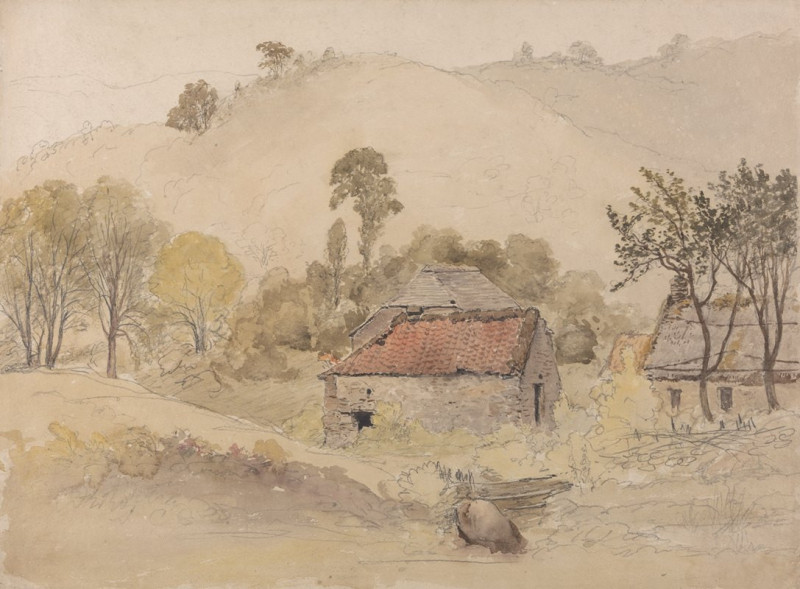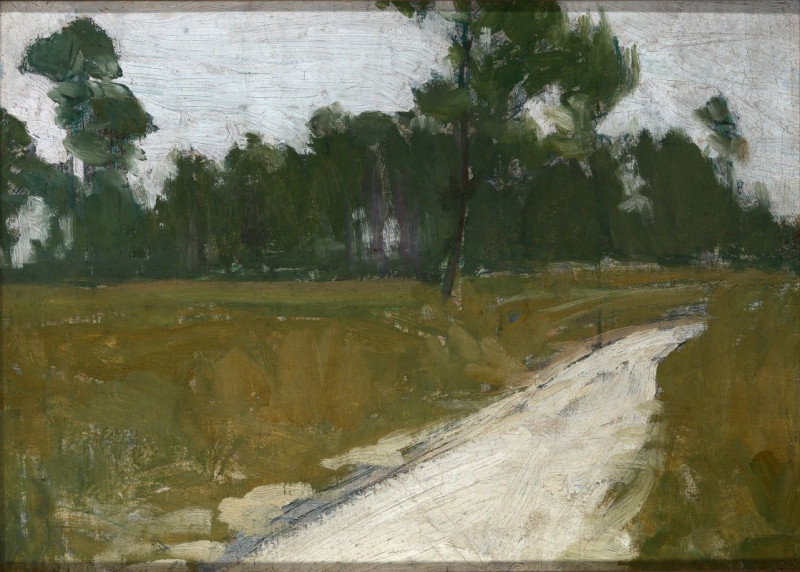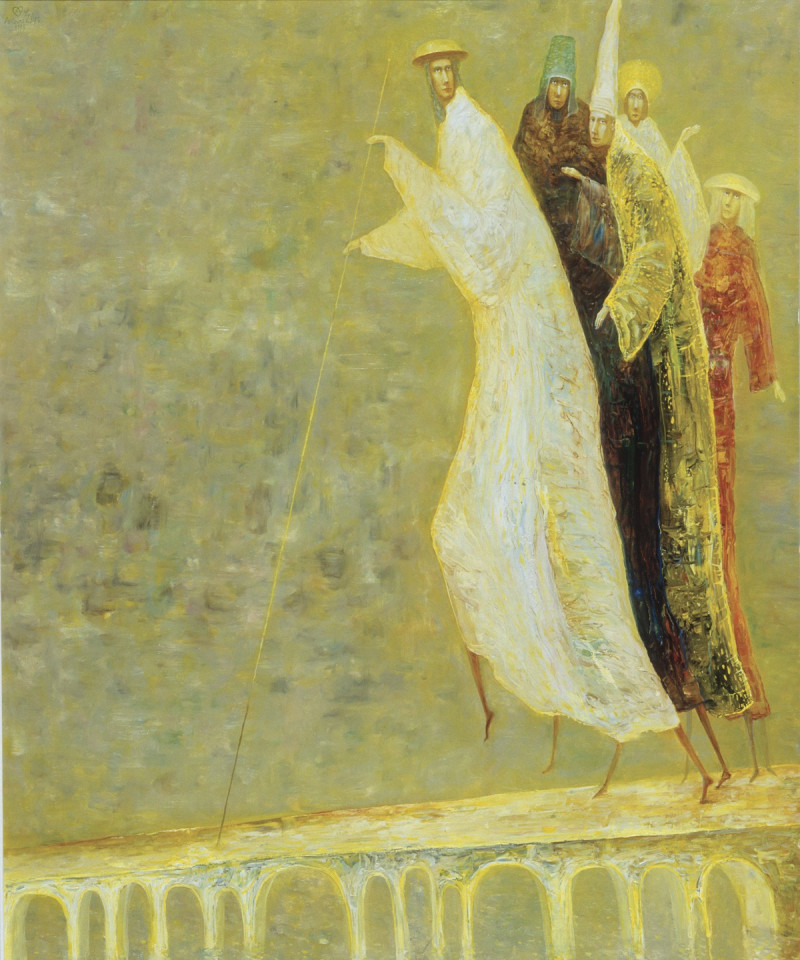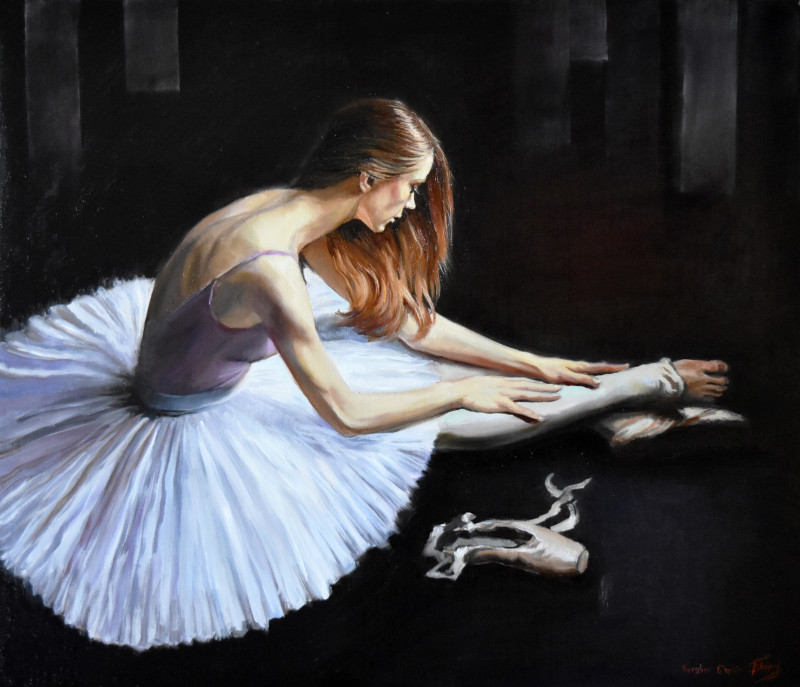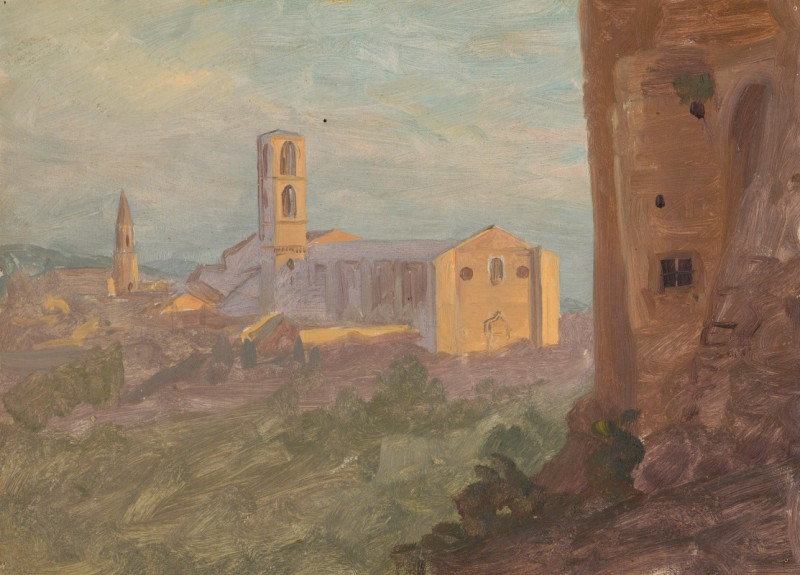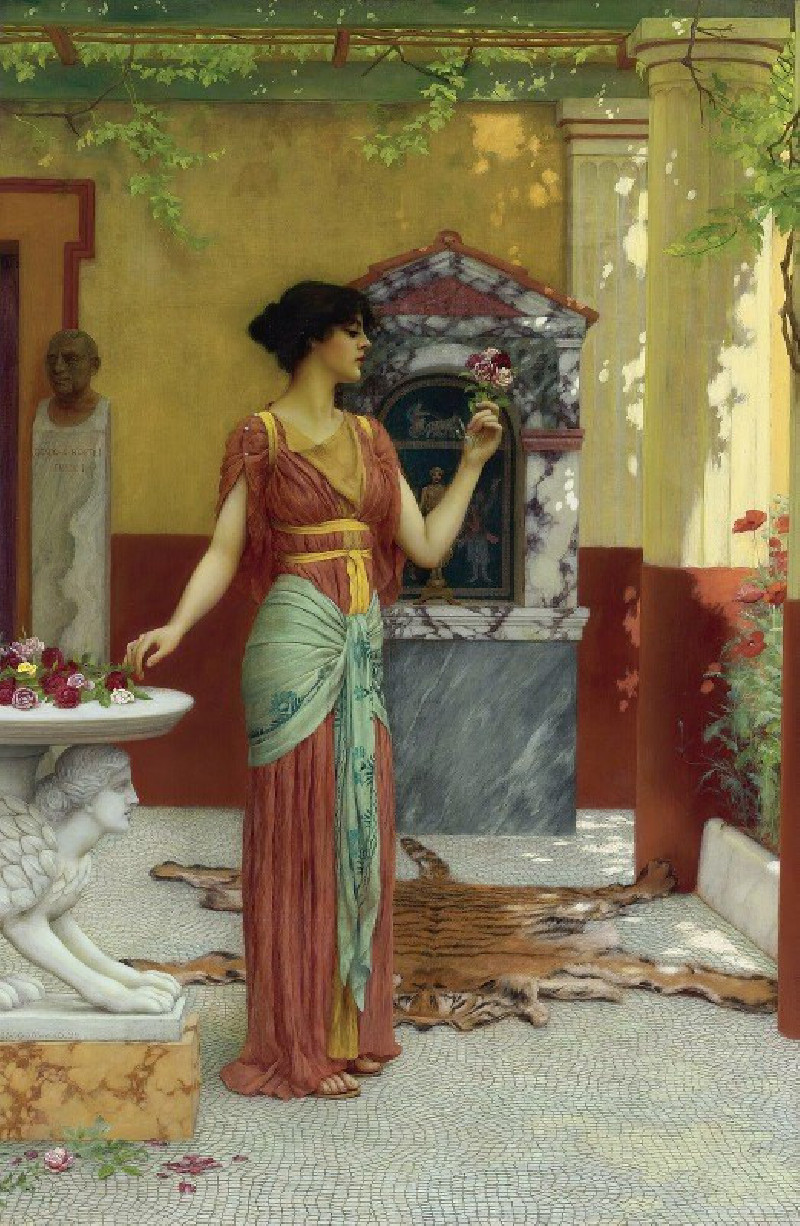Turkish Café (1914)
Technique: Giclée quality print
Recommended by our customers
More about this artwork
August Macke's vibrant painting titled "Turkish Café" from 1914 captivates viewers with its dynamic use of color and composition, illuminating Macke's fascination with the interplay between light, form, and hue. Rendered in a style that straddles Expressionism and Cubism, the piece showcases a scene set within a café, which, through Macke's lens, becomes a mesmerizing tableau of geometric abstraction and sumptuous color contrasts.In "Turkish Café," what appears to be an interior space is divided into colorful segments of blue, red, and yellow, creating a harmonious yet boldly expressive environment. The café is adorned with a large yellow chair and a small cyan table on which rests a simple white vase and a red geometric object, possibly a book or a folded piece of fabric. The presence of a shaded figure near the table introduces a human element, cloaked predominantly in green and black, suggesting a quiet moment of contemplation or solitude. Overarching this intimate scene are green leaves, dipping into the frame from above, implying that the setting may be partially open to the elements or an encroaching natural world.Macke's application of vivid, contrasting colors not only reinforces the structural lines of the composition but also evokes a sense of warmth and liveliness typical of public social spaces like cafes.
Delivery
Returns
August Macke (3 January 1887 – 26 September 1914) was a German Expressionist painter. He was one of the leading members of the German Expressionist group Der Blaue Reiter (The Blue Rider). He lived during a particularly innovative time for German art: he saw the development of the main German Expressionist movements as well as the arrival of the successive avant-garde movements which were forming in the rest of Europe. Like a true artist of his time, Macke knew how to integrate into his painting the elements of the avant-garde which most interested him.


